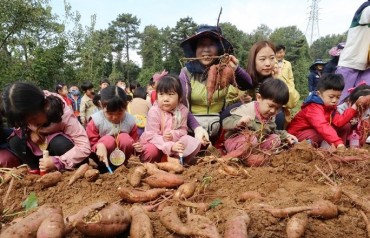
With South Korea poised for the onset of another cold snap expected to last the week, 911 emergency response units are receiving an increasing number of calls from concerned citizens who require assistance with the removal of large icicles hanging from eaves and the sides of buildings. (Image: Yonhap)
SEOUL, Jan. 24 (Korea Bizwire) – With South Korea poised for the onset of another cold snap expected to last the week, 119 emergency response units are receiving an increasing number of calls from concerned citizens who require assistance with the removal of large icicles hanging from eaves and the sides of buildings.
With temperatures continuing to fluctuate, plunging below zero before climbing back up then once again falling to below freezing levels, the possibility of icicles large or small dislodging and falling onto parked cars – not to mention passing pedestrians – has been raised as a potential public safety hazard.
In addition, the accumulation of ice on roof edges can result in so-called ice dams, named for their tendency to block snow on the roof from properly draining. The snow may then melt and seep into the building, causing damage in a variety of ways.
The Gangwon Province Fire Departmet revealed on January 22 that it had undertaken 28 icicle removal jobs since last month, 16 more than in the same period last year.
Officials revealed that 14 of the icicle buildups were found at apartment complexes, and seven each at other accommodations buildings and on structures around roads.
Firefighters in other regions were similarly busy removing dangerous ice. Kyeonggi Ilbo reported January 17 that the Incheon Fire Department had so far in January been called on 28 times to get rid of icicles.

Officials revealed that 14 of the icicle buildups were found at apartment complexes, and seven each at other accommodations buildings and on structures around roads. (Image: Yonhap)
Kyeonggi Ilbo also reported that the icicle removal jobs have been a significant part of Incheon firefighters’ winter tasks in the past few years, with the department carrying out 116 jobs in 2016 and 84 last year.
The primary culprits behind the formation of icicles are water leaks.
The removal of one or more icicle accumulations can take hours, as one post on the Gangwon fire department’s website attested to.
“Even in weather conditions nearly 20 degrees below zero, thanks to the fire department service members who labored for hours, the icicles have disappeared. Thank you very much,” the grateful individual wrote.
Lina Jang (linajang@koreabizwire.com)






